The 1980s marked the golden age of toy commercials, an era when advertising directly to children became a sophisticated art form. Before internet algorithms and streaming services, Saturday morning cartoons were sacred ground where toy companies competed for kids’ attention—and their parents’ wallets. These commercials didn’t just showcase products; they sold fantasy, adventure, and social currency in 30-second bursts of pure childhood desire. Looking back at these masterpieces of manipulation reveals exactly why we begged, pleaded, and bargained for these plastic treasures that no child could seemingly live without.
1. He-Man and the Masters of the Universe: “I Have the Power!”
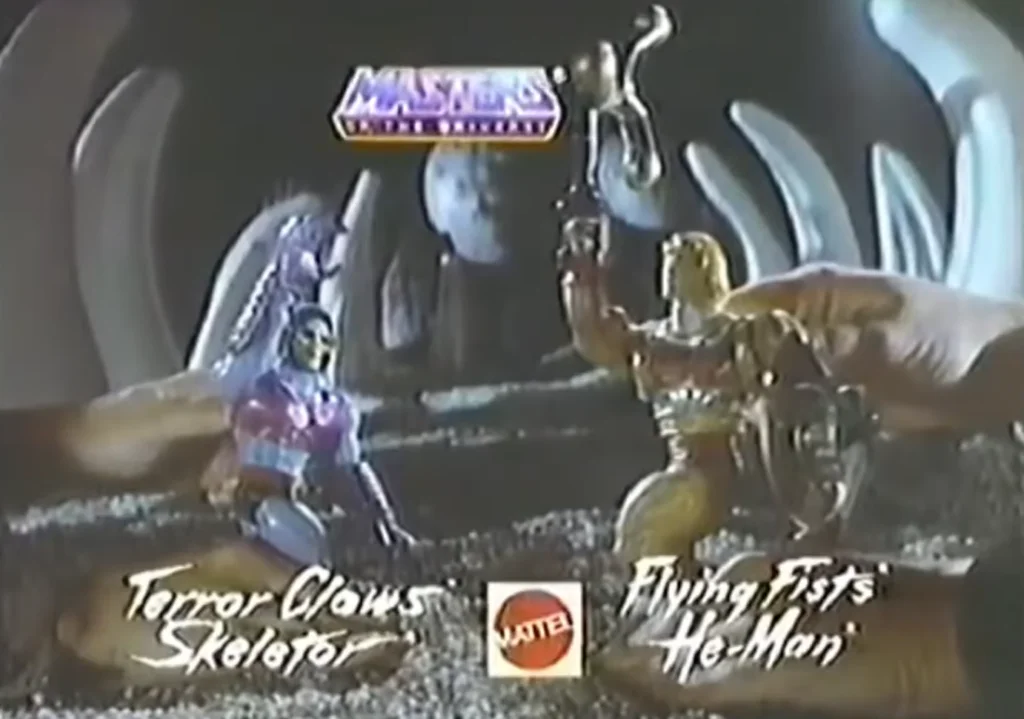
Nothing captured the ’80s fantasy action figure phenomenon quite like the commercials for He-Man and the Masters of the Universe. These mini-epics showcased impossibly muscled heroes battling skeletal villains across alien landscapes, all filmed with dramatic camera angles and smoke effects that made the toys appear life-sized and animated. The iconic moment when a child actor would raise the He-Man figure skyward, mimicking the cartoon’s transformation sequence while shouting “I have the power!” became a playground staple across America. CBR has some additional facts about the franchise as a whole that fans must know to complete this epic adventure.
What made these commercials irresistible was how they blurred the line between the animated series and the toys, suggesting that purchasing Castle Grayskull or Battle Cat would allow you to recreate the exact adventures you watched on TV. The camera would zoom dramatically into a child’s eye to show reflection of epic battles, implying that owning these toys would transport you into the fantasy world itself. Parents never stood a chance against marketing that promised not just toys but access to an entire universe of adventure where you—yes, YOU—could wield the power of Grayskull right in your own bedroom.
2. Strawberry Shortcake: Scented Sensory Overload
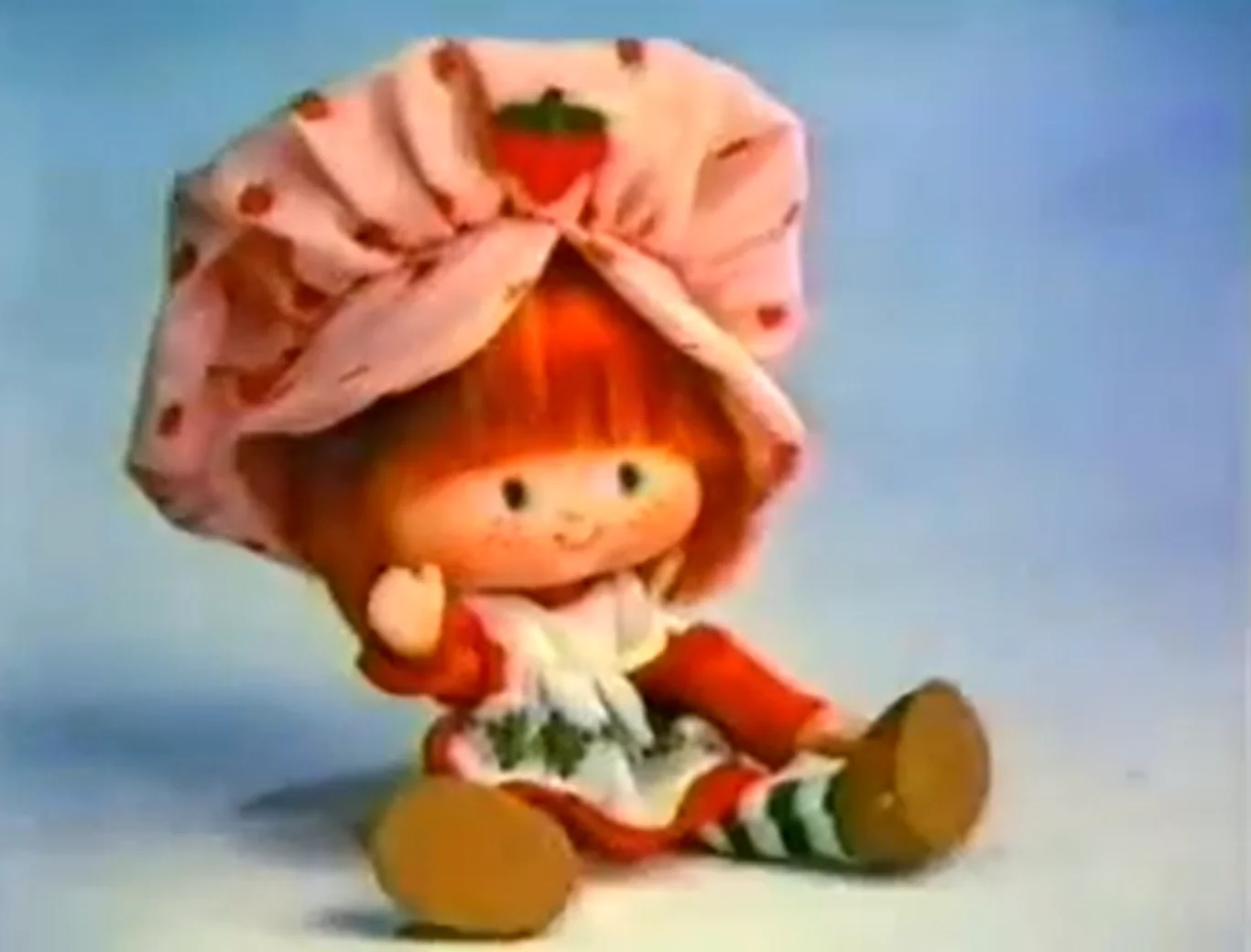
Strawberry Shortcake commercials created an immersive sensory experience that pioneered the use of “scratch and sniff” technology in TV Guide ads and created an entire world of fruit-scented characters with complementary accessories. The advertisements featured impossibly cheerful girls in colorful settings fawning over the dolls, bringing them to their noses, and inhaling deeply with expressions of pure bliss. The narration always emphasized the “real strawberry smell!” as though this was the technological breakthrough parents had been waiting for. Global Toy News takes a trip through time to show just how many evolutions this simple, adorable toy has gone through, and the nostalgia is positively delicious.
What made these commercials particularly effective was their focus on the expanding universe of collectible characters—Cherry Cuddler, Blueberry Muffin, Lemon Meringue—each with their own distinct scent and personality. The ads cleverly showcased the entire line while focusing on the newest character, creating an immediate sense that your collection was already incomplete. These commercials didn’t just sell dolls; they sold an entire sensory lifestyle where even storage cases and playsets were imbued with fruity fragrances, making Strawberry Shortcake one of the first toys to fully engage multiple senses in their marketing strategy.
3. Transformers: “More Than Meets the Eye!”
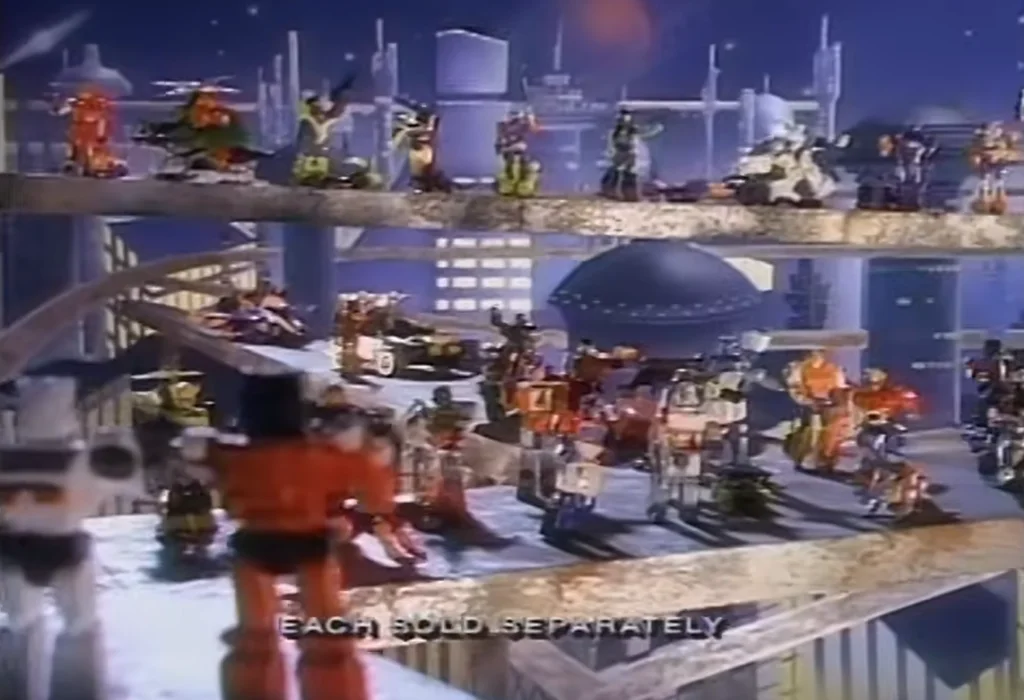
Transformers commercials mastered the art of making complicated toy transformations look effortless and exciting, all while an intensely serious narrator declared “Transformers: Robots in Disguise!” The advertisements brilliantly showcased the toys’ dual nature—first as ordinary vehicles, then dramatically changing into battle-ready robots. The quick-cut editing and close-up transformation sequences, accompanied by mechanical sound effects, made the process seem far more seamless than many frustrated kids would later discover. Museum of Play gets in on the action and sees just how much these toys have transformed since their beginnings to now, remaining timeless all the while.
What elevated these commercials was their cinematic approach, filming toy cars and jets from low angles to make them appear full-sized, then cutting to explosive battle sequences where sparks and smoke suggested high-stakes robot warfare. The commercials often ended with an impressive lineup of the entire Autobot or Decepticon collection, implicitly communicating that owning just one Transformer was merely the beginning of your collection. The iconic slogan—”More than meets the eye!”—perfectly encapsulated the toy’s appeal while inadvertently describing the commercials themselves, which transformed simple plastic toys into epic science fiction adventures.
4. Cabbage Patch Kids: The FOMO Factory

Cabbage Patch Kids commercials pioneered artificial scarcity marketing to children, emphasizing the “adoption” process and unique nature of each doll rather than traditional play features. These advertisements featured beaming children cradling their “babies,” complete with official-looking adoption papers bearing the signature of creator Xavier Roberts. The commercials deliberately highlighted the dolls’ distinct features—different hair colors, facial expressions, and outfits—suggesting that no two were exactly alike.
What made these commercials particularly effective was how they created a sense of social urgency, showing groups of children comparing their Cabbage Patch Kids while the narrator emphasized the “adoption” process. Unlike other toy ads that showcased fantasy play, these commercials focused on the emotional bond between child and doll, creating a nurturing narrative that appealed to both children and parents. When real-world scarcity led to store riots during the 1983 Christmas season, the commercials’ messaging about each doll being special and irreplaceable had succeeded beyond the marketers’ wildest dreams, creating a phenomenon that transformed toy retail forever.
5. G.I. Joe: “Knowing Is Half the Battle!”
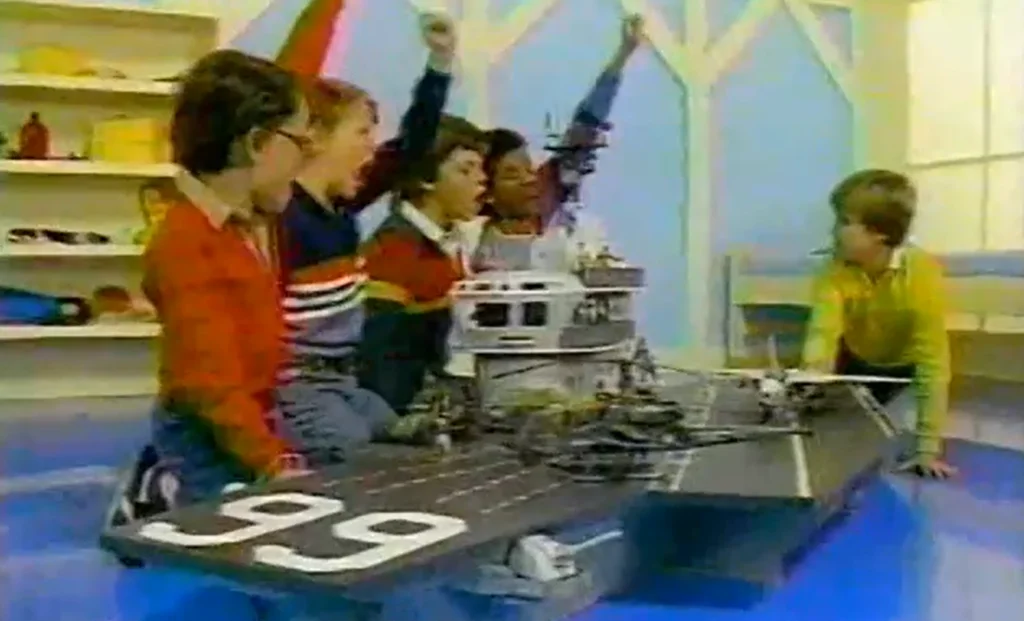
G.I. Joe commercials perfected the art of miniature war films, using close-up photography, outdoor settings, and sound effects to create the illusion that the 3.75-inch figures were engaged in epic military operations. These advertisements featured rapid-fire editing between children manipulating the toys and close-up shots that made the plastic vehicles and playsets appear life-sized. The gravelly-voiced narrator would introduce each new character with their specialty—”Snake Eyes: Ninja Commando!”—while animated lasers and explosions enhanced the action.
What distinguished these commercials was their presentation of G.I. Joe as a complete system rather than individual toys, showcasing how figures, vehicles, and bases could work together in elaborate missions. The ads often highlighted specific play features—”with swivel-arm battle grip” or “real parachute action”—while demonstrating them in dynamic outdoor settings rather than sterile studios. Each commercial concluded with the entire featured collection assembled for battle, followed by the cartoon’s famous PSA tagline “Now you know, and knowing is half the battle!”—creating a seamless connection between the animated series and the toy line that drove millions of kids to collect them all.
6. My Little Pony: “My Little Pony… My Little Pony…”
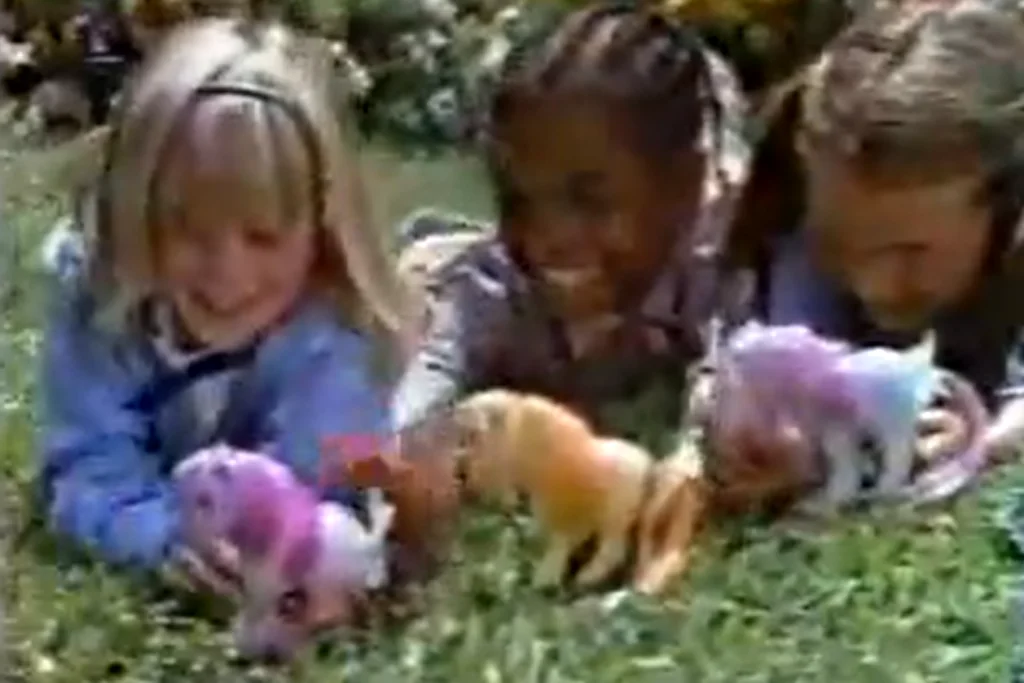
My Little Pony commercials created an enchanted world where colorful plastic horses with brushable manes lived in pastel castles surrounded by rainbows and butterflies. These advertisements featured gentle female narration and the earworm jingle that would become permanently embedded in ’80s children’s brains: “My Little Pony, My Little Pony, what will today’s adventure be?” The spots typically showed girls brushing the ponies’ long manes and tails while arranging elaborate social scenarios—tea parties, weddings, and royal coronations.
What made these commercials so effective was their emphasis on the expanding universe of collectible characters and accessories, creating an immediate sense that more ponies were needed for a complete collection. Each commercial introduced new pony characters with special symbols (“cutie marks”) that represented their personalities, while showcasing compatible playsets like the Paradise Estate or the Show Stable. The ads brilliantly balanced fantasy elements with practical demonstrations of the toys’ features, particularly the brushable hair that became the line’s signature attribute, creating desire not just for the ponies themselves but for the idyllic world they represented.
7. Nintendo: “Now You’re Playing with Power!”
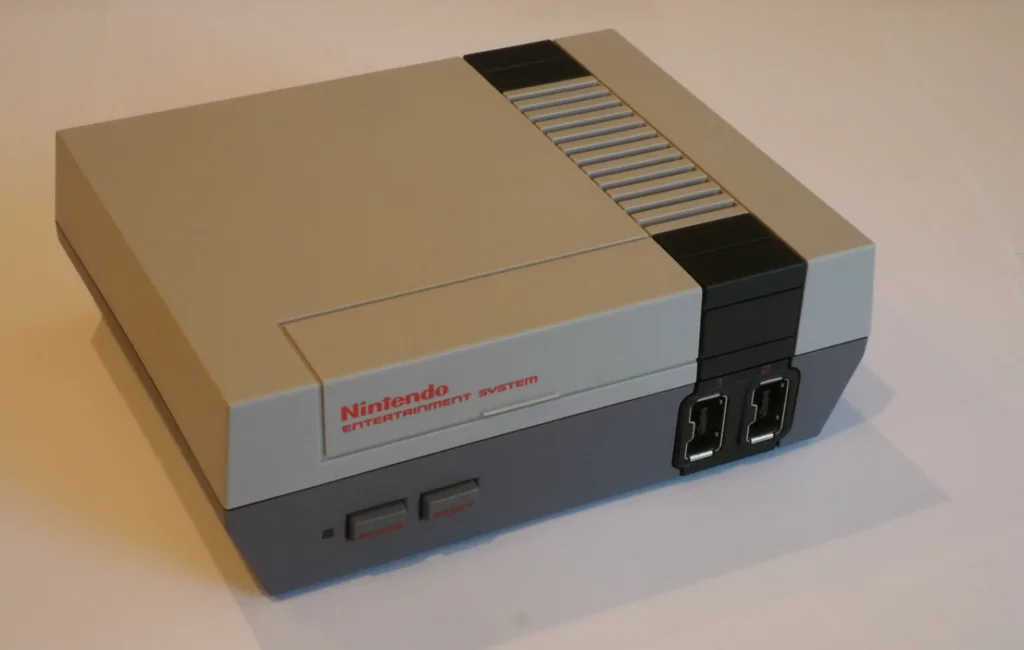
Nintendo’s commercials broke new ground by marketing video games with a cinematic intensity previously reserved for action figures and playsets. Their advertisements featured dramatic lighting, fog machines, and child actors staring with intense concentration at off-screen TVs while Nintendo sound effects created an audio connection to familiar games. The company’s famous slogan—”Now you’re playing with power!”—was delivered with dramatic gravity, suggesting that Nintendo ownership was transformative.
What made these commercials particularly effective was how they positioned video games as the next evolution in play, something beyond traditional toys that offered experiences impossible in the physical world. Rather than explaining gameplay mechanics, the ads focused on children’s emotional reactions—excitement, concentration, and exhilaration—while quick cuts showed game footage that seemed impossibly advanced for the era. Nintendo’s marketing specifically targeted the emerging “gamer” identity, suggesting membership in an exclusive club of the technologically advanced rather than just another toy purchase, a strategy that helped the company dominate the video game market after the industry crash of 1983.
8. Teddy Ruxpin: The Talking Bear That Sparked Technological Envy
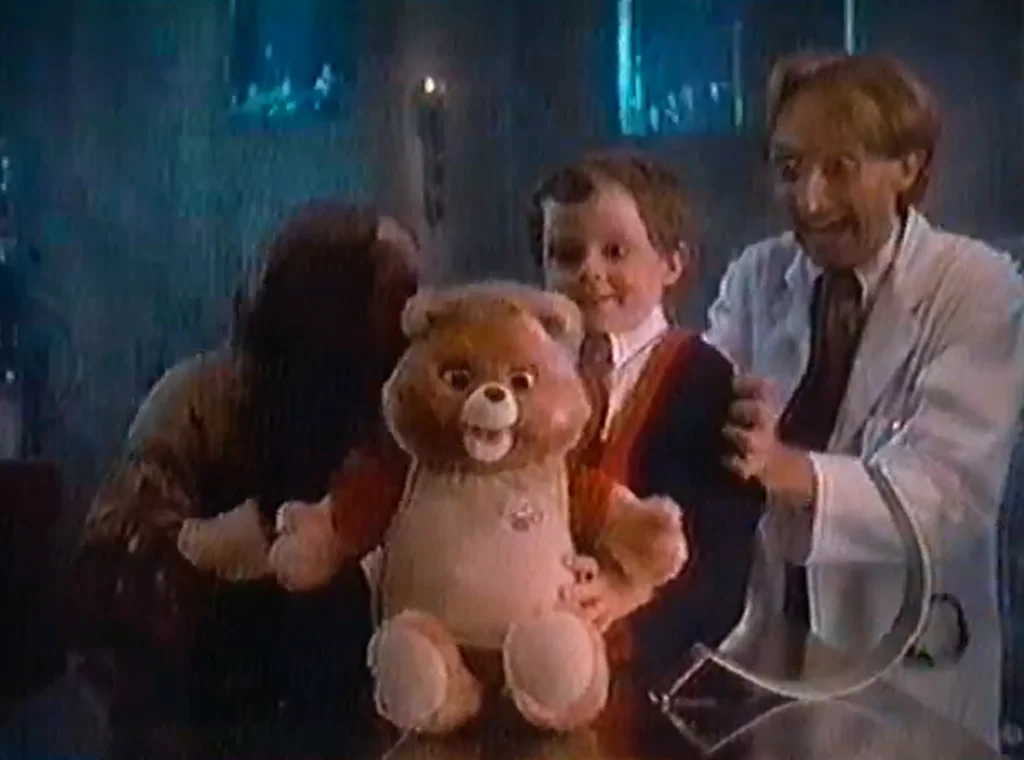
Teddy Ruxpin commercials showcased what seemed like magical technology—a stuffed bear that could tell stories with synchronized lip and eye movements. These advertisements typically began with close-ups of amazed children watching Teddy “come to life” as a cassette tape hidden in his back activated his animatronic features. The commercial’s tone conveyed reverence for what was presented as a technological wonder rather than just another stuffed animal.
What made these commercials particularly effective was their dual appeal to both children and parents. For kids, Teddy represented a truly interactive friend who could tell stories on demand. For parents, the educational aspect was emphasized, positioning Teddy as an investment in literacy rather than just another toy. The ads cleverly showed groups of children gathered around the bear, suggesting it was a toy worth sharing and discussing—a social currency as much as a plaything. By combining cuddly appearance with cutting-edge (for the time) technology, Teddy Ruxpin commercials created desire for what many children saw as their first must-have electronic companion.
9. Star Wars: Building a Universe One Figure at a Time
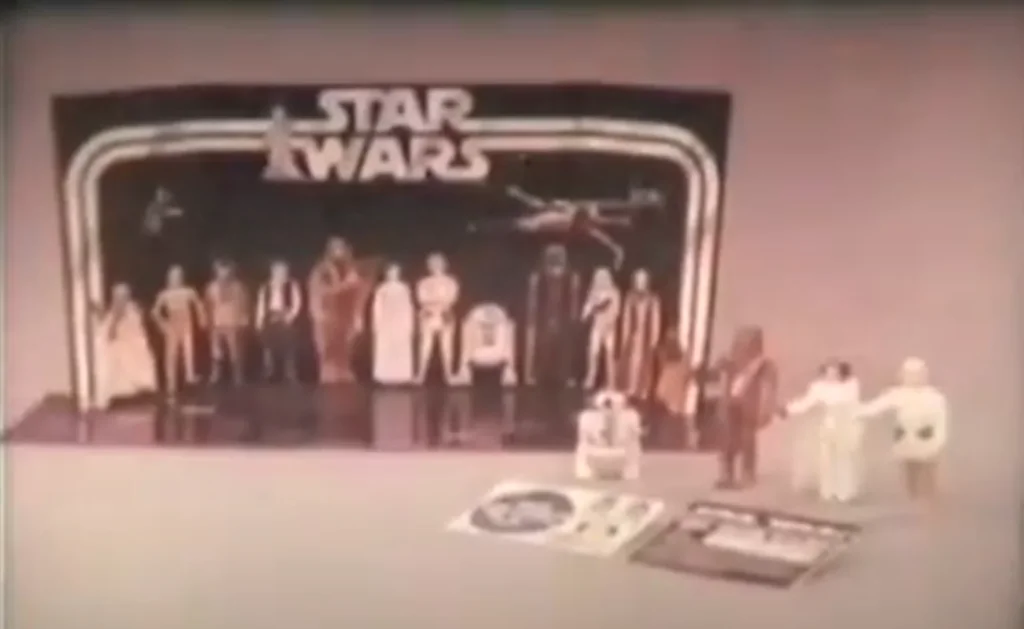
Star Wars commercials mastered the art of recreating movie magic in living rooms through expansive collections of action figures and vehicles. These advertisements typically featured elaborate dioramas recreating famous scenes from the films, with dramatic camera moves sweeping across dozens of figures arranged in battle formations. The narrator would emphasize the growing number of available characters—”Collect all 12! 47! 79!”—making it clear that a true Star Wars fan’s collection was perpetually incomplete.
What distinguished these commercials was their focus on worldbuilding, showing how playsets like the Millennium Falcon or Jabba’s Palace could serve as stages for endless adventures with the 3.75-inch figures. The ads skillfully balanced showcasing new products with reminding viewers of the expanding universe of existing toys, creating a collector mentality that extended beyond children to adult fans. By featuring child actors recreating movie scenes while adding their own dialogue, the commercials highlighted how Star Wars toys allowed children to extend the story beyond what was seen in theaters—a powerful selling point that helped maintain interest in the toys even during the years between film releases.
10. Rainbow Brite: Technicolor Marketing Mastery
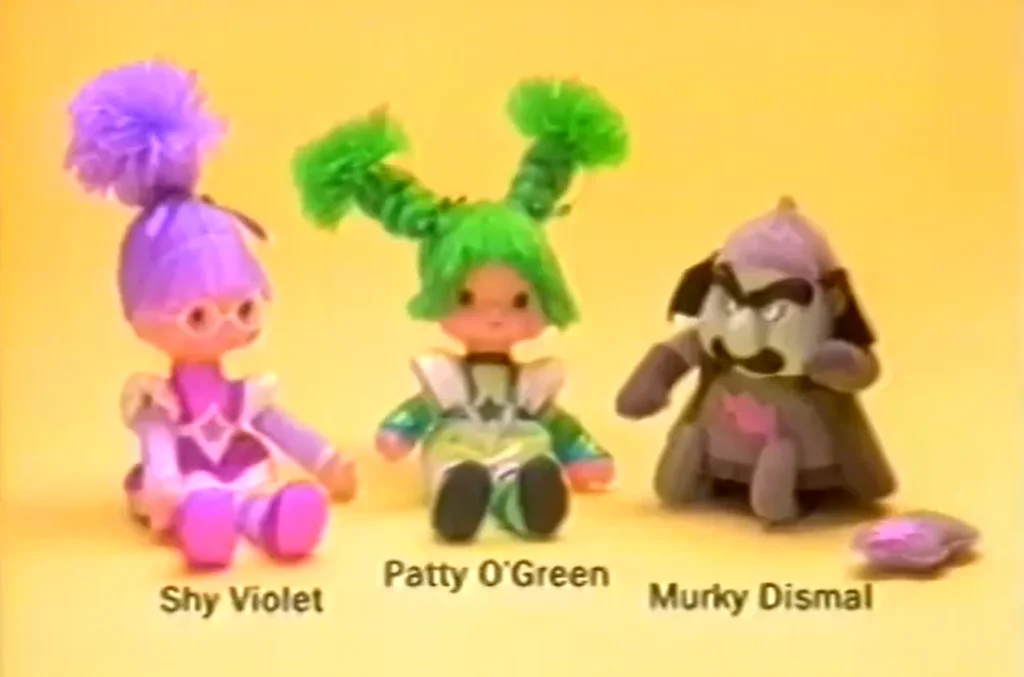
Rainbow Brite commercials transported viewers to a technicolor world where a blonde heroine and her magical friends brought color to the universe. These advertisements featured impossibly bright settings, rainbow effects, and sparkle animations that made the dolls and their star sprinkle accessories seem magical rather than plastic. The commercials typically showed girls arranging elaborate scenes with the complete collection of Color Kids dolls, their sprites, and Rainbow’s horse Starlite.
What made these commercials particularly effective was their cohesive color story—each Character Kid represented a specific color of the rainbow, creating an obvious collection imperative. The ads brilliantly showcased the full line while focusing on the newest additions, making children feel their Rainbow Brite world was incomplete without the latest character. Like many successful ’80s toy lines, Rainbow Brite started with a single character and continuously expanded, with commercials that emphasized the growing universe and the relationships between characters. This approach created not just desire for individual dolls but for completion of the Rainbow Land world.
11. Micro Machines: The Fast-Talking Revolution
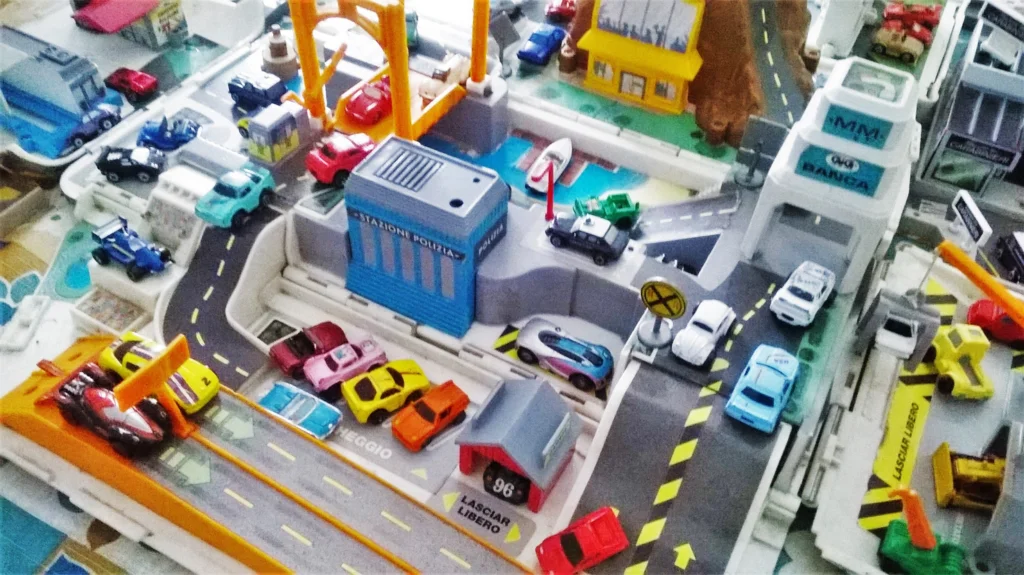
Micro Machines commercials featured spokesman John Moschitta Jr. (listed in the Guinness Book of World Records as the world’s fastest talker) rattling off features at an incomprehensible pace while tiny cars performed seemingly impossible stunts. These fast-paced advertisements stood out dramatically from other toy commercials, using rapid-fire delivery and extreme close-ups to make the miniature vehicles seem exciting and substantial despite their tiny size.
What made these commercials unforgettable was how they turned a potential disadvantage—the toys’ small size—into their primary selling point, emphasizing that they were “the smaller the better” and portable enough to fit in a pocket. The ads cleverly demonstrated scale by showing dozens of vehicles fitting in a single hand or arranged on a school notebook. Moschitta’s rapid-fire delivery perfectly matched the product’s emphasis on speed and compression, creating a memorable auditory signature that helped distinguish Micro Machines from other die-cast cars. The commercials’ tagline—delivered at warp speed—”Remember, if it doesn’t say Micro Machines, it’s not the real thing!” created brand awareness that helped this newcomer compete with established vehicle toy lines.
12. Barbie: “We Girls Can Do Anything!”
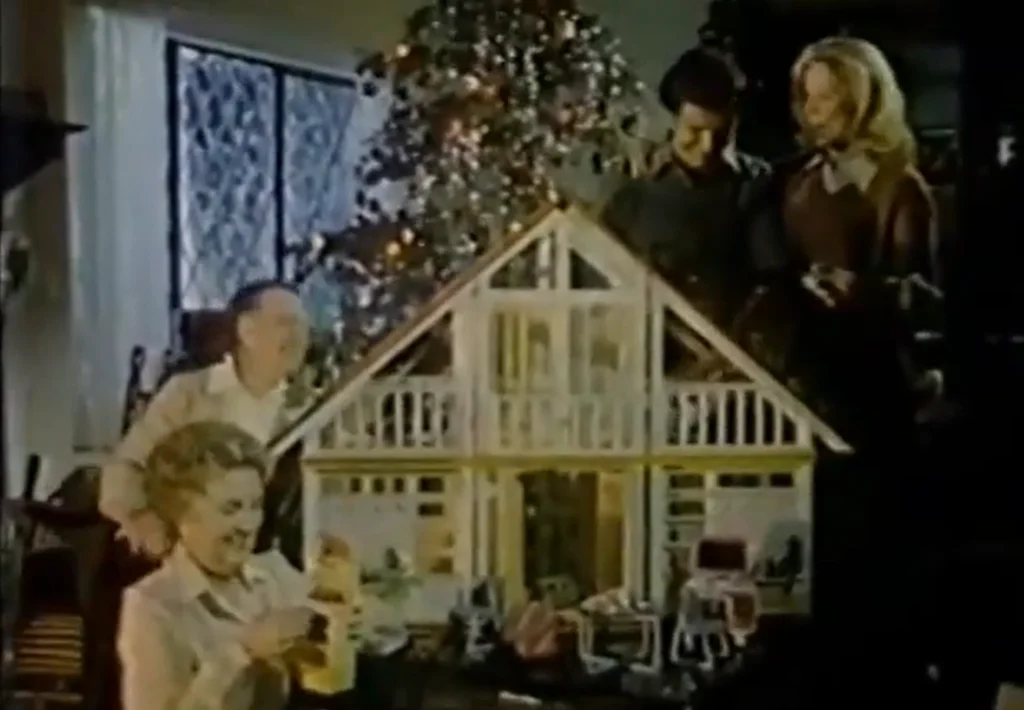
Barbie commercials of the ’80s expanded beyond fashion play to showcase career-oriented dolls with the empowering slogan “We Girls Can Do Anything!” These advertisements featured elaborate sets where Barbie was depicted as a doctor, astronaut, business executive, or rock star, often with a full narrative arc compressed into 30 seconds. The commercials typically showed real girls manipulating the dolls through professional scenarios before the camera pulled back to reveal the extensive lineup of accessories and outfit options.
What made these commercials particularly effective was their positioning of Barbie as both aspirational and accessible—a role model who helped girls imagine their future possibilities. The ads cleverly balanced fashion elements (quick changes into different outfits) with career advancement, creating a narrative that appealed to both children and parents concerned about positive messaging. Each commercial emphasized Barbie’s world-building aspects, showing how the core doll could be supplemented with themed playsets and friend dolls to create complete environments. The catchy “Barbie” jingle that concluded each ad ensured brand recognition while the ever-expanding career options kept the decades-old doll feeling contemporary and relevant to ’80s girls.
13. LEGO: “Build Something Together”
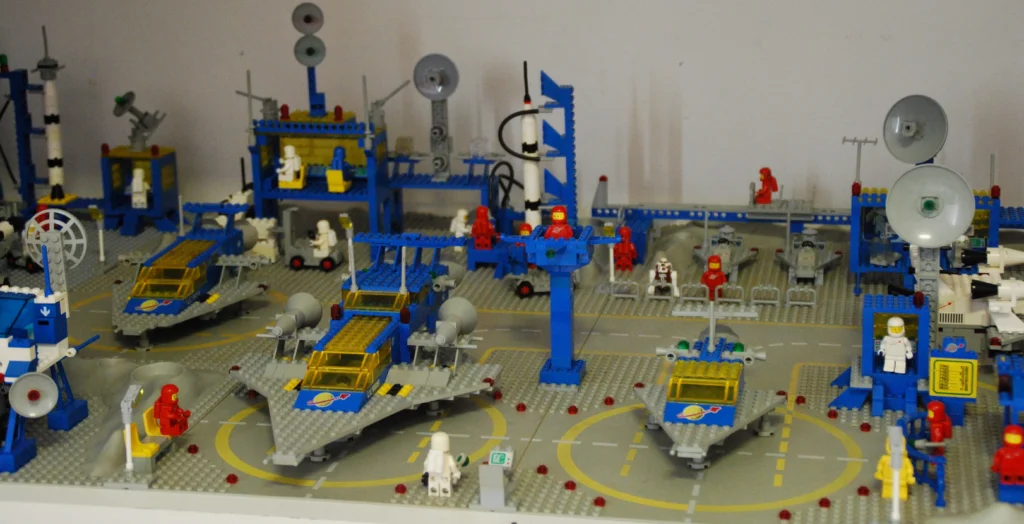
LEGO commercials showcased elaborate constructions that transformed from recognizable buildings or vehicles into fantastic creations with a child’s imagination. These advertisements typically featured close-up shots of hands connecting bricks, pulling back to reveal impressive structures that seemed beyond what most children could actually build. The commercials emphasized LEGO’s open-ended play value while still promoting specific themed sets like Space, Castle, or City.
What distinguished these commercials was their focus on the creative process and the pride of building something substantial. Unlike ads that emphasized collecting characters or enacting pre-defined scenarios, LEGO commercials suggested the toys could become anything imaginable. The ads often showed multiple children building together, emphasizing cooperative play and shared achievement. The tagline “Build Something Together” appealed to parents who valued educational toys and creative development. By demonstrating both the specific themed sets and the limitless recombination possibilities, LEGO commercials succeeded in marketing both structured and unstructured play, creating desire for ever-expanding brick collections that could be passed down through generations.
The brilliance of ’80s toy commercials lay in their ability to create not just desire for products but entire fantasy worlds that seemed accessible only through ownership. These advertisements didn’t just showcase toys; they sold membership in cultural phenomena, promised transformation of ordinary playtime into extraordinary adventures, and created collection imperatives that kept children perpetually wanting “just one more” to complete their set. Looking back at these masterpieces of persuasion explains why so many of us spent our childhoods with wish lists longer than we were tall, and why these brands continue to trigger powerful nostalgia decades later. In just 30 seconds, they made plastic toys seem like essential keys to happiness, friendship, and imaginative fulfillment—a marketing magic that has never truly been replicated since.


